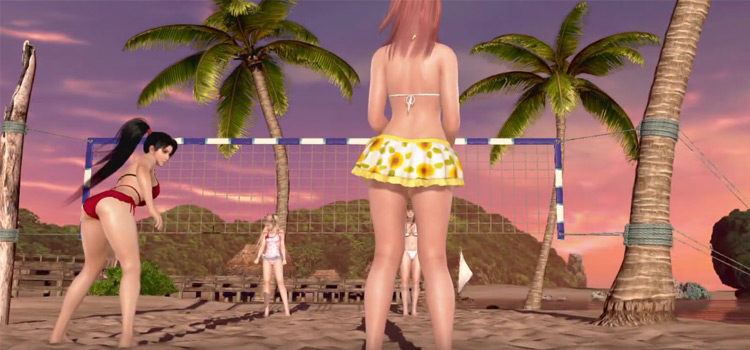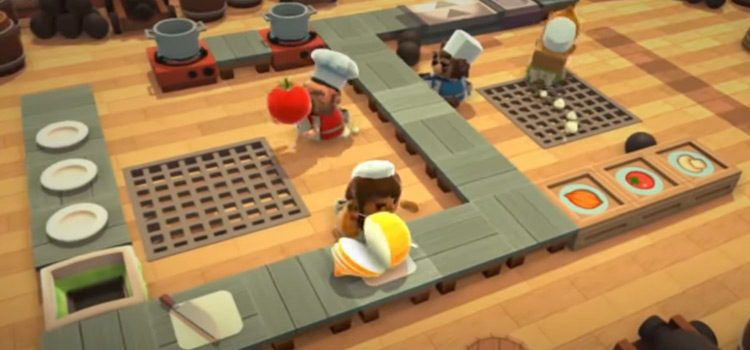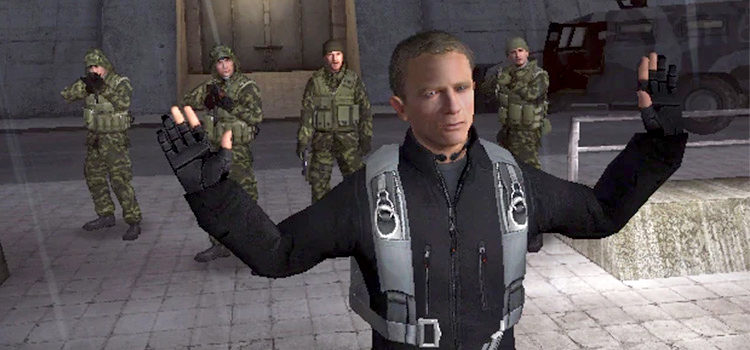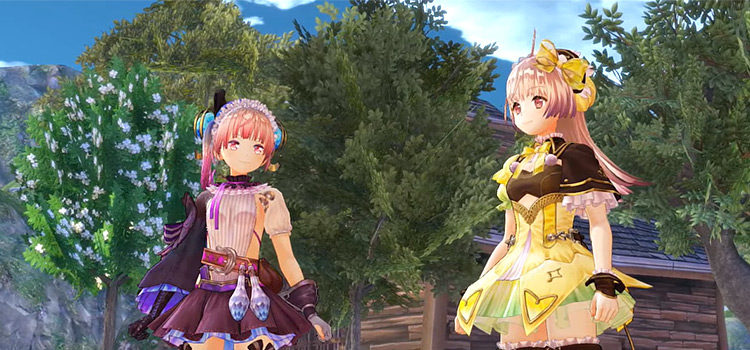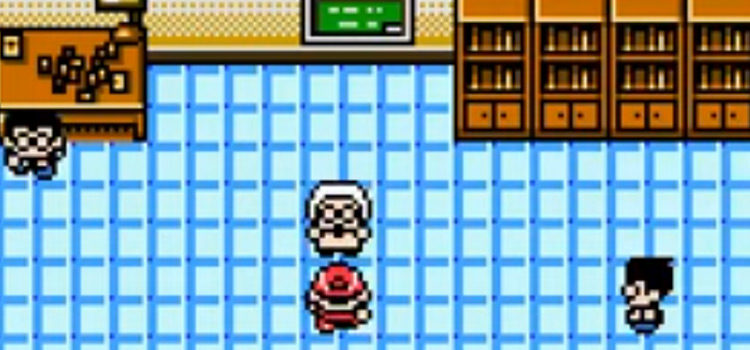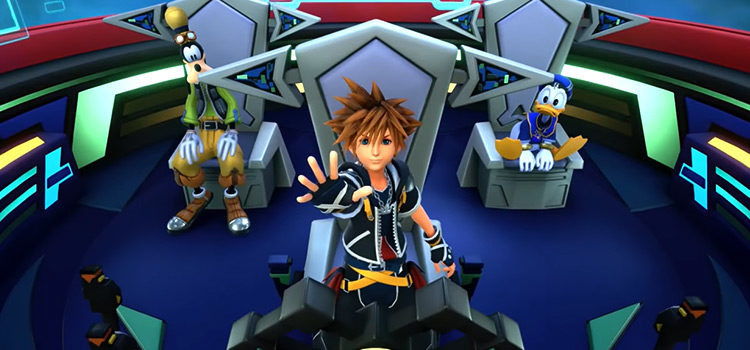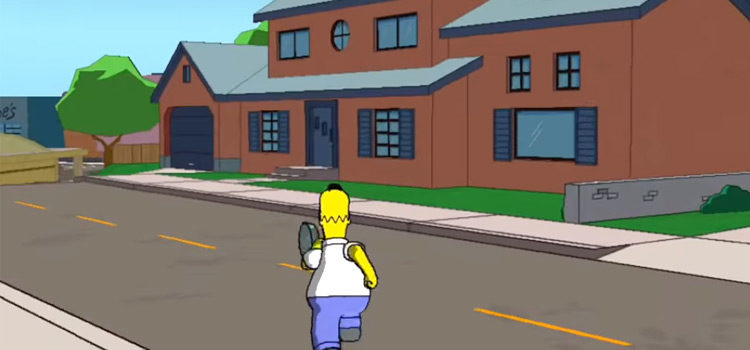Top 20 Best ColecoVision Games Ever Made
This post may contain affiliate links. If you buy something we may get a small commission at no extra cost to you. (Learn more).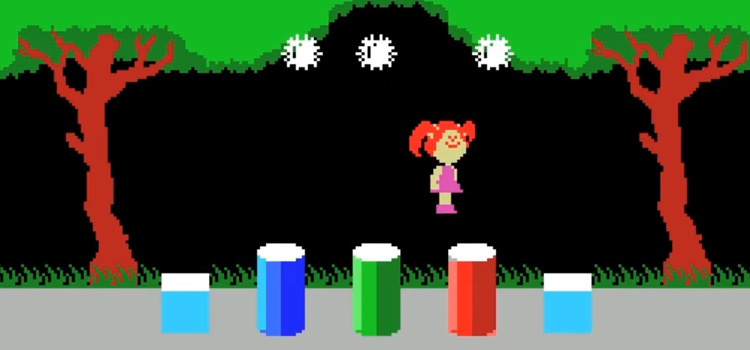
Most gamers may be more familiar with Atari consoles or the NES – but back in the early 80s, no machine was more potent than Coleco Industries’ ColecoVision.
Marketed as “the arcade-quality video game system”, the ColecoVision is well-known for its fluid gameplay and fantastically bright colors. It was also one of the few “home arcade” consoles that delivered a solid image that didn’t flicker.
Regrettably, its sales and general prospects were severely limited by the video game crash of 1983.
After the release of the NES, Nintendo’s aggressive licensing policies were also hard on ColecoVision’s game library.
Eventually the system faded into obscurity, along with the company that made it. Gone but never forgotten.
We’re looking back at this fantastic console and celebrating the best games released for Coleco’s historic gaming system.
20. Mouse Trap (1982)
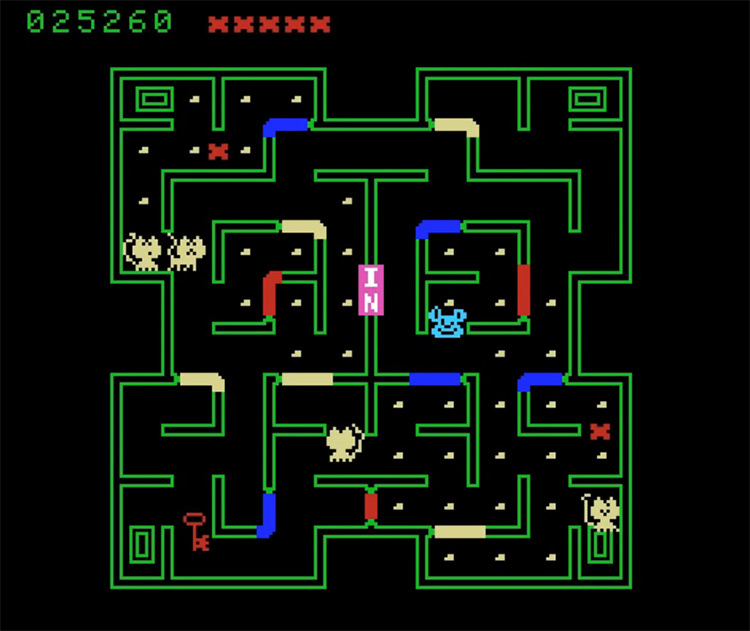
If you like Pac-Man, then you need to try Mouse Trap on the ColecoVision.
Instead of a featureless yellow circle, you control a mouse trying to eat cheese and other goodies while avoiding ferocious cats, this game’s take on Pac-Man’s ghosts.
The base gameplay mechanics are mostly the same, with some creative twists that set it apart from the classic pill chomper.
This includes changing the speed of the pursuing felines depending on your performance.
If you’re trying this out, remember to keep an eye on the sky. A vicious hawk may come down and eat you at any point in the game.
19. Spy Hunter (1984)
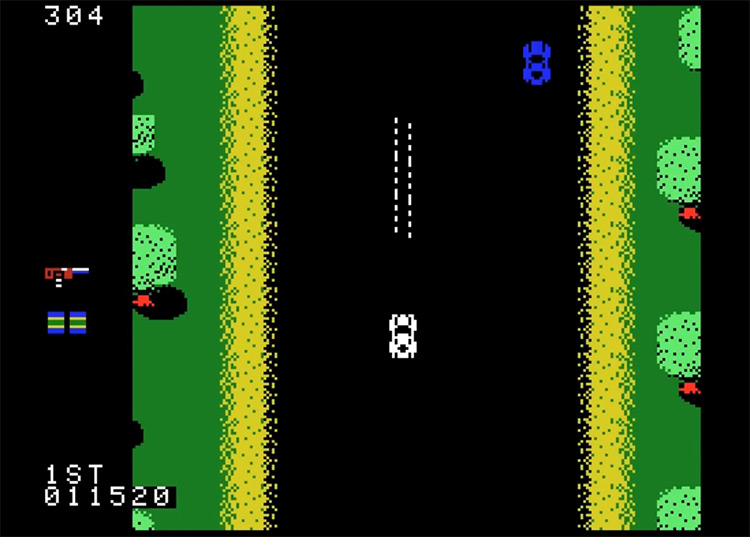
Ample experience working on racer arcade cabinets such as Sprint and Pole Position put this game designer in a privileged position to create one of the first examples of a vehicular combat game – Spy Hunter.
Rather than run-n-gun, this game will have you racing and gunning down your opponents from your exotic spy car.
It brings together the exciting speed from a racing game, with the precise shooting of a top-down shoot-em-up.
Spy Hunter is a perfect demonstration of the ColecoVision’s power and fluidity.
And if you like this game consider trying out SpyHunter, its 2001 remake/sequel on sixth-generation video game consoles like the PS2 and GCN.
18. Steamroller (1984)
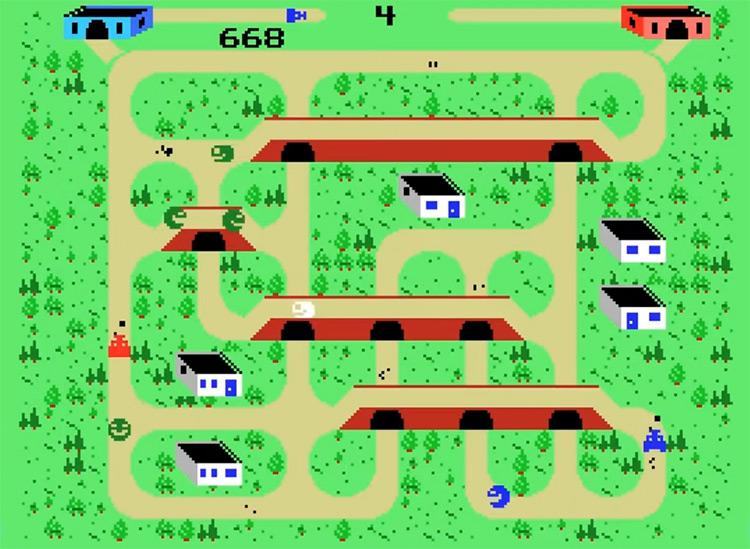
One of the most unique titles here is Steamroller, a game about fixing batches and potholes on an asphalt road by driving over them on a steam-powered road roller.
Of course, it’s not that simple.
You must keep an eye out for sentient bouncy balls and crush them for points – but be careful, as there are bombs mixed in with the colorful orbs.
It’s a vivid, slightly strategic, and very fun game. It’s also exclusive to the ColecoVision!
If you look this up it’ll often be credited as a title released in the year 2000, but it appears to be a 1984 release. The oddities of gaming history, right?
17. Gyruss (1984)
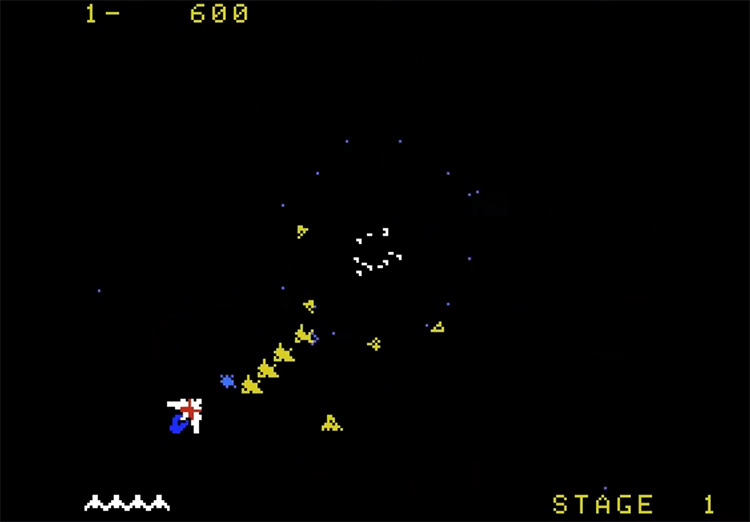
The influence of the iconic 1978 arcade title Space Invaders is evident on Gyruss, one of the best options lovers of the fixed shooter genre had on the ColecoVision.
In this galactic adventure you must make the trip from Neptune to Earth and back, all while avoiding asteroids and destroying all enemy ships with extreme prejudice.
What makes it unique is how the game uses the direction of stars “flying by” to create the illusion of depth.
It simulates speed and the feeling of movement in a way never seen before in the genre at the time.
16. Smurf: Rescue in Gargamel’s Castle (1982)
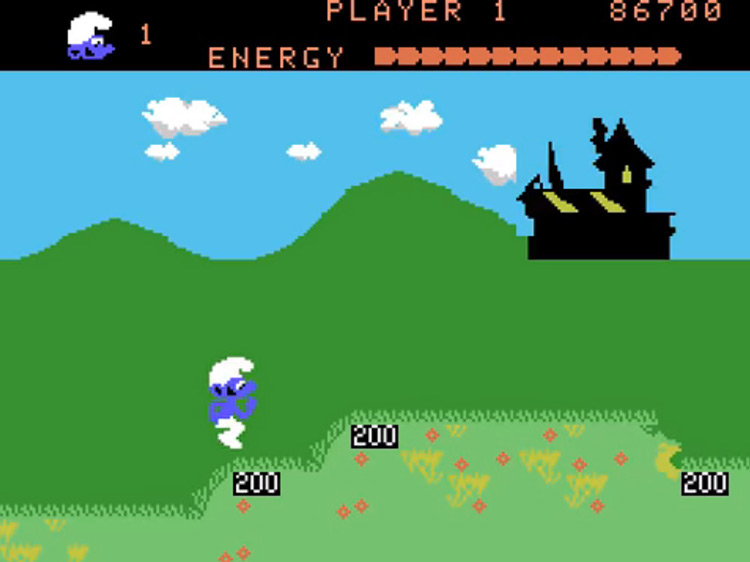
The Smurfs may not be big on games anymore.
But this platformer on the ColecoVision was a definite win in the history of blue-skinned Belgian comic characters.
Among the features that make this game rise above the competition are the graphics’ detail and raw visual appeal. It may be hard to imagine for modern gamers, but this was cutting-edge at the time.
While not incredibly innovative, the gameplay and level design in this title were also fantastic.
15. Illusions (1984)
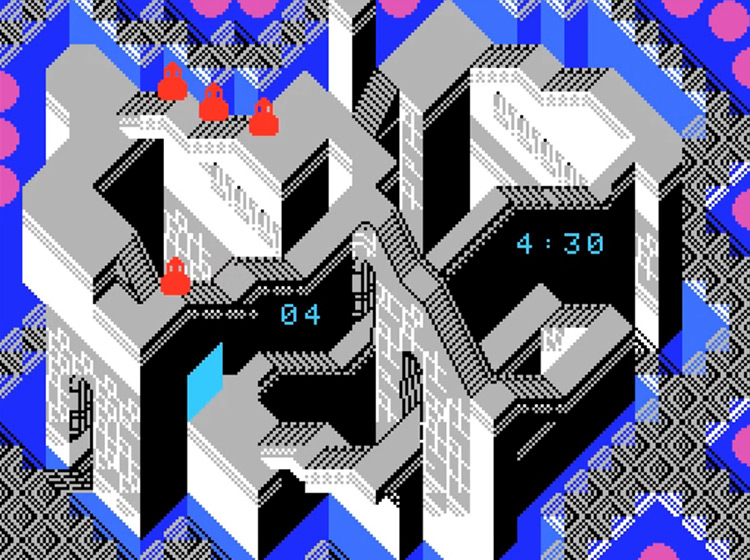
If you’re into optical illusions and other reality-bending phenomena, you’ll love Illusions on the ColecoVision.
The game is based on the concept of Escherian stairwells, also known as Penrose Steps – an optical illusion that simulates physically-impossible steps.
You’ll have to maneuver blobs around these non-Euclidean spaces, fusing and splitting them to reach your objectives.
Be careful to avoid lizards, or dump water on them to slow them down – but beware, as these immobilized reptiles will turn into birds after a while and redouble their efforts to hunt down your blobs.
14. Pitfall II: Lost Caverns (1984)
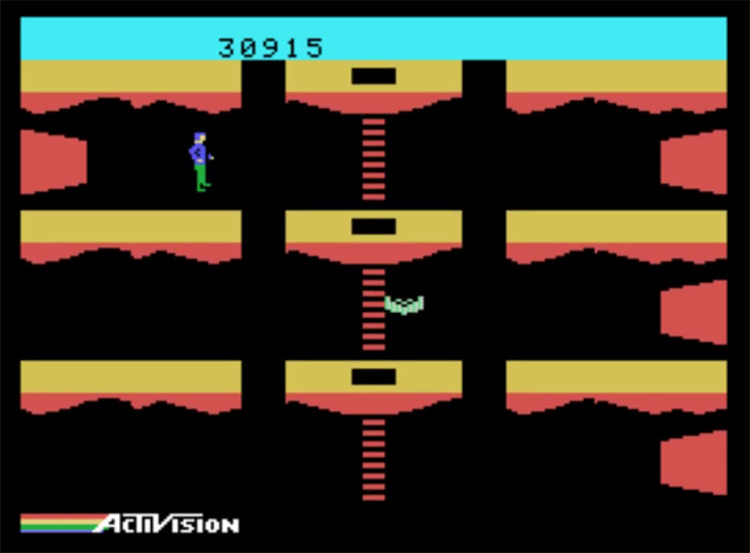
The sequel to the quintessential platformer Pitfall brings back the same excellent gameplay on a much larger scale, with almost twice its predecessor’s content.
One of this game’s most significant innovations was the introduction of “checkpoints” throughout levels.
They kept players from losing all of their progress after losing a life, allowing developers to make longer and more challenging levels without alienating less-skilled players. Crazy looking back now, but this was a radical idea at the time.
Gameplay remains just as good on the ColecoVision as it was on the Atari 2600 – but the superior visual fidelity of Coleco’s machine does a lot to improve the experience.
13. Gorf (1983)
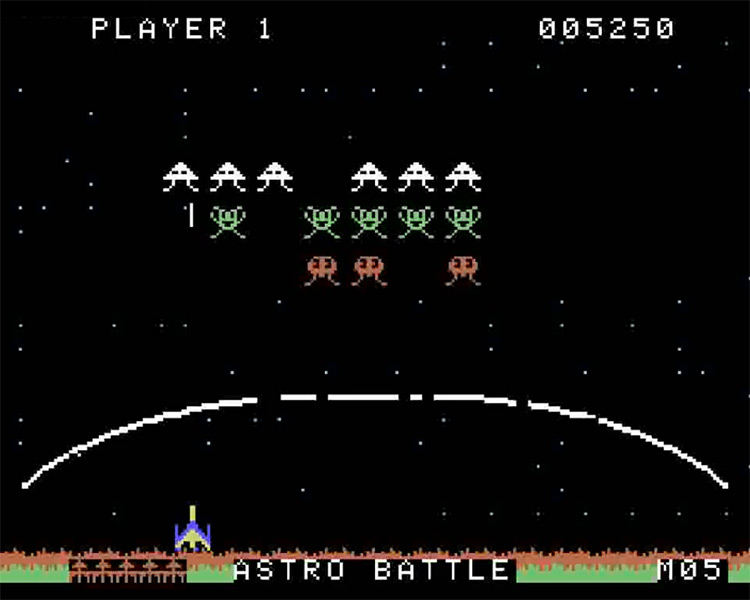
One of the earliest examples of a space shooter with multi-axis movement is Gorf, initially released in cabinet form for arcades in 1981.
Stopping aliens from reaching the surface of the Earth was a gaming obsession since Space Invaders, and this iteration on its basic formula brings in new twists that set it apart. These include the addition of boss fights and the freedom to shoot at any time without waiting for previous shots to leave the screen.
Originally envisioned as a Star Trek tie-in, this title had to pivot and become its own thing late into development – which explains the striking similarities between The Enterprise and the game’s playable ship.
12. Burger Time (1984)
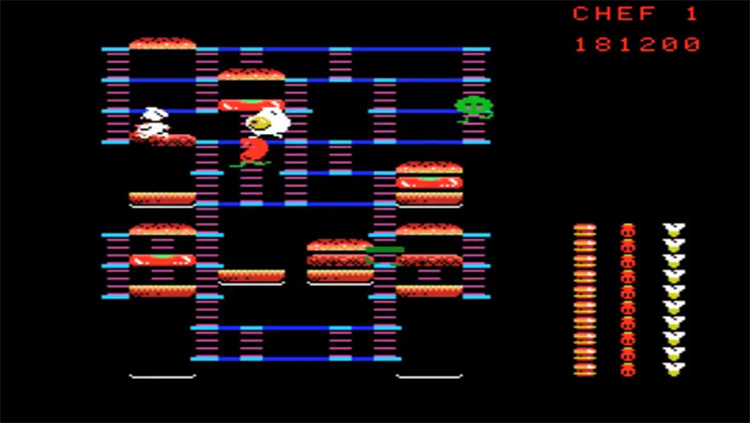
Where Gorf plays into its genre’s tradition, Burger Time is an experiment that brings together puzzles and platforming – all wrapped in appealing graphics with smooth animation.
In this game, players control a cook struggling to assemble beef patties several times his size.
To do this, he’ll have to jump on the ingredients to make them fall onto the plate layer by layer.
You can get extra points for crushing enemies with falling patties and bread – which is awfully fitting when considering that your foes are pickles, tomatoes, and other hamburger staples.
11. Fortune Builder (1984)
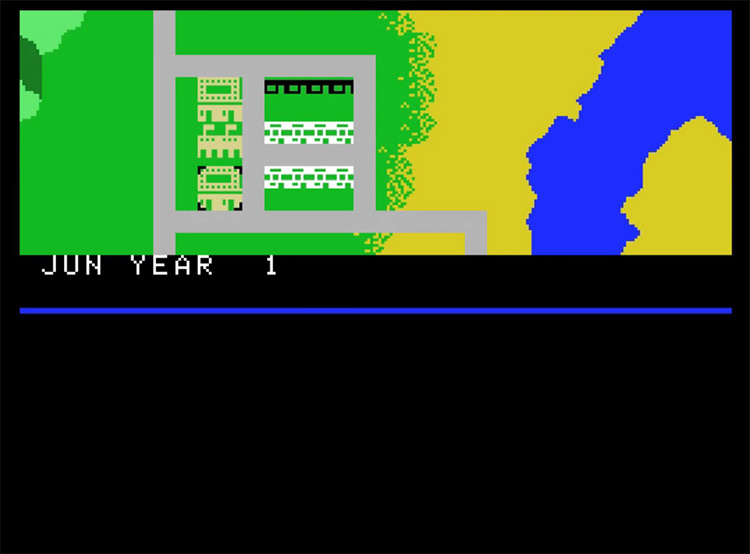
SimCity may have popularized the city building genre as we know it today.
But that would have been impossible without precursors like Fortune Builder.
You’re given a certain amount of money you’ll have to invest wisely in laying down roads and building establishments that help your urban creation draw visitors and, with them, more cash – which you’ll pour back into the town.
It doesn’t have the same complexity as most modern city builders. But it still presents a substantial challenge, and you’ll probably find yourself pouring hours into creating the perfect settlement.
10. Frenzy (1983)
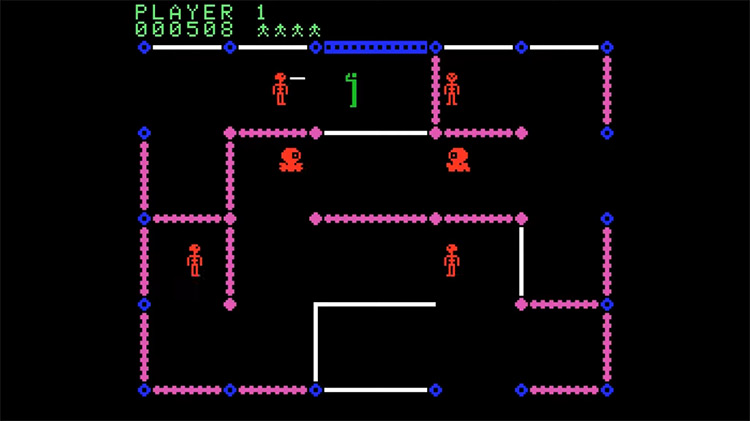
Nowadays, we care a lot about the graphical fidelity of our favorite violent games.
Whatever it is we’re vanquishing, we want to see their remains scattered around in HD – but that wasn’t always the case.
When it comes to Frenzy – the sequel to arcade classic Berzerk – graphics take a back seat so the intense multi-directional shooting can shine brighter.
Whether it’s robotic skeletons or tanks, it doesn’t matter. As long as you’re raking in the points with precise shooting.
While the original arcade Berzerk was ported to other consoles, this evolution on its basic formula is exclusive to the ColecoVision.
9. River Raid (1984)
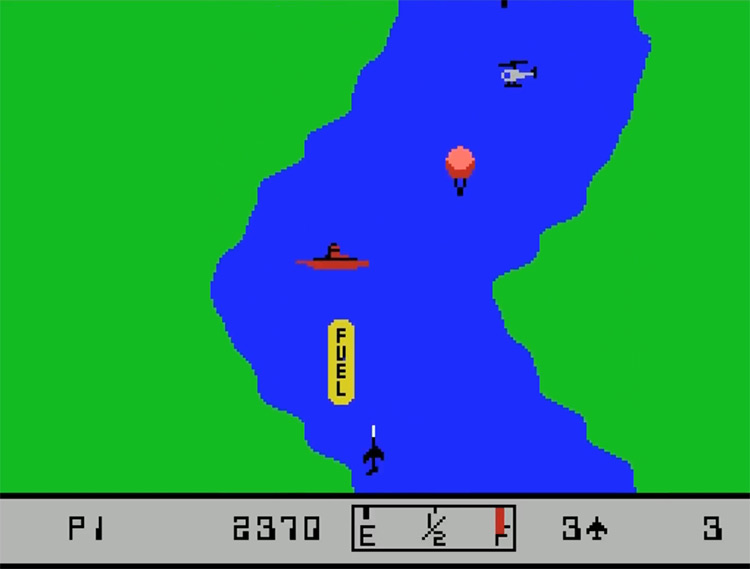
When people think of piloting aircraft in video games, they’ll think of something high-tech like Microsoft Flight Simulator. Or an intense and rich narrative like Ace Combat.
But River Raid had to walk before these modern titles could fly.
The game follows a lone pilot maneuvering their jet over a heavily militarized river. You must make your way upstream, destroying enemy bases, operatives, and bridges to help the war effort.
Among this game’s interesting quirks is the fuel management system, which requires you to find (and destroy) fuel stations on your way so you can replenish your tank and keep up raining fire.
8. Cabbage Patch Kids: Adventures in the Park (1984)
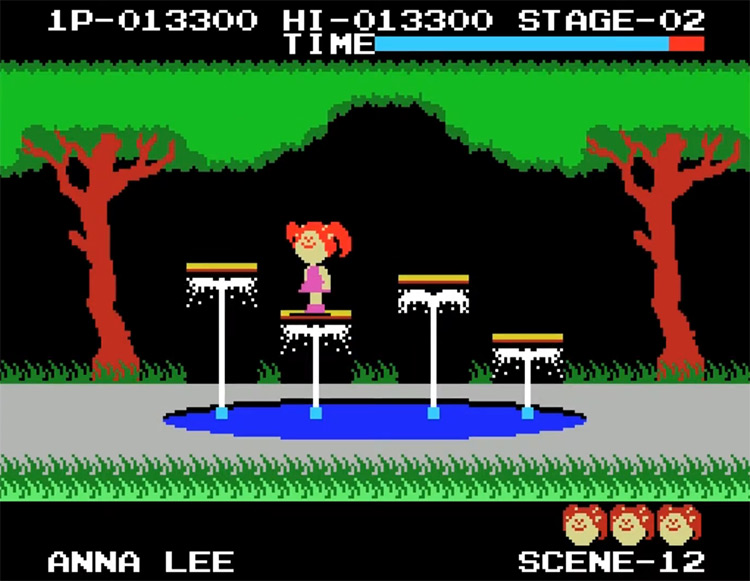
An exciting storyline and bad-ass characters are always helpful when it comes to selling a game. But when you have Cabbage Patch Kids’ excellent gameplay, anything will do.
It’s pretty similar to Pitfall – as are most platformers of the era.
But what it doesn’t have in innovation, it makes up for in bright and detailed graphics.
Make your way back home before sunset, avoiding bouncy balls, bees, fish, and other mundane obstacles trying to keep you from respecting your curfew.
7. WarGames (1984)
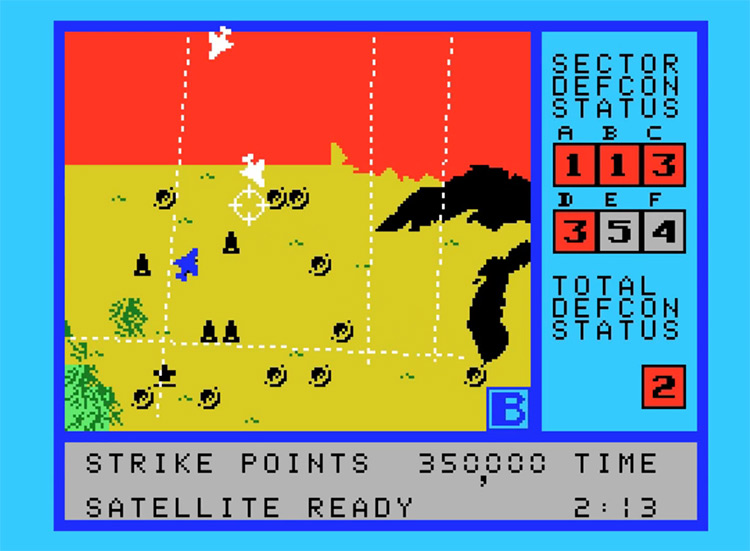
One of the ColecoVision’s most popular and entertaining exclusives is War Games, inspired by the 1983 film of the same name.
After the US’ automatic nuclear retaliation system is compromised, it’s up to you to manually stop any enemy missiles from reaching the mainland and triggering a nuclear response that would plunge the world into nuclear winter.
The game is considered a milestone in game programming due to its technical complexity, and it’s one of the first outstanding strategy games.
6. Q*Bert (1983)
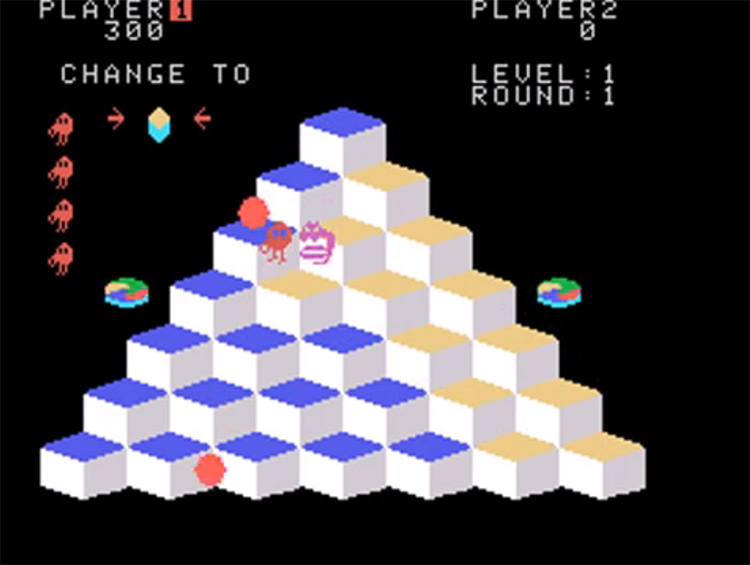
Few faces from the Golden Age of Arcades are as well-known as Q*bert, who’s recently starred in several films such as Wreck-It Ralph and Pixels.
This is the game that started Q*bert’s career.
Or, well, it’s the ColecoVision release of the original arcade cabinet.
It’s pretty much the same experience, and Coleco’s machine renders the isometric graphics wonderfully.
To clear a level you’ll have to jump from block to block until you’ve painted them all. It may seem simple at first, but remember this was designed to empty bags of quarters ASAP – so it gets harder pretty fast.
5. Q*bert’s Qubes (1984)
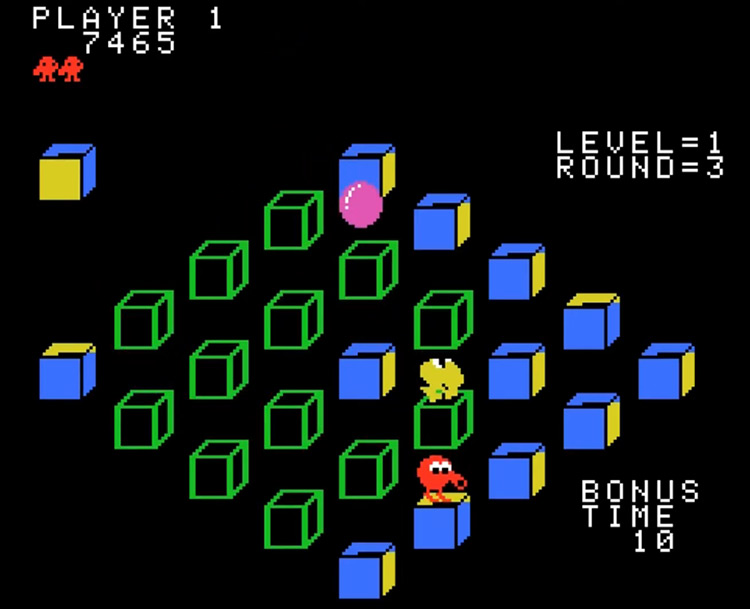
If you liked Q*bert, you’ll only find more enjoyment in its aptly named sequel: Q*bert’s Qubes.
Much like in the first game, your objective is to jump from block to block, applying different colors each time you step on them. That said, the sequel introduces several new twists.
Stuff like diverse win conditions, new enemies, and an overhauled sound profile.
For lovers of puzzle games, this is probably the best game on the system.
4. Tarzan (1984)
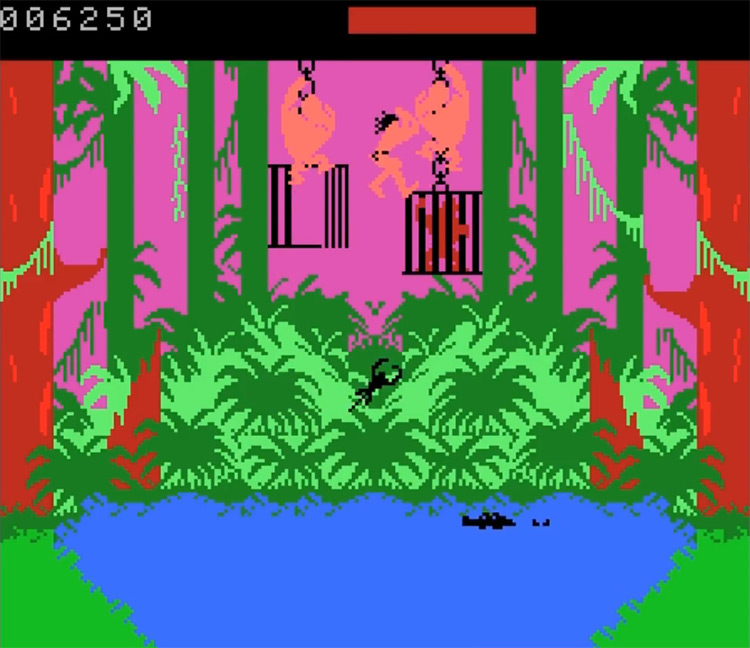
You may be surprised to find a movie tie-in so high up on the ranking.
But Tarzan breaks the “terrible tie-in” stereotype with some of the most realistic and exciting platforming the ColecoVision has to offer.
You’ll have to run around punching gorillas and generally trampling over the local wildlife if you want to survive the dangers of the jungle – but don’t feel too bad, because the game will do everything it can to trample over you first.
It’s intense, frantic, and a total blast. Even after so many years.
3. Zaxxon (1982)
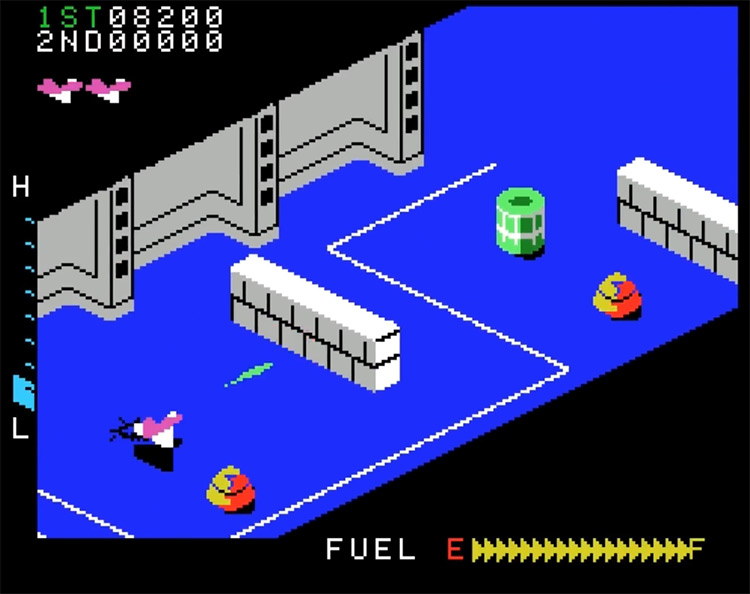
I never get tired of talking about Zaxxon, one of the most innovative shoot-em-ups of its era.
Where lesser games are happy with re-hashing the Galaga experience over and over again, Zaxxon flips the script with an isometric perspective and three-dimensional movement. It introduced a new layer of complexity that both genre veterans and newcomers were happy to challenge.
The ColecoVision release of Zaxxon is also considered the best one, as its bright pastel colors complement the intricate level design and fluid animations wonderfully.
2. Donkey Kong (1982)
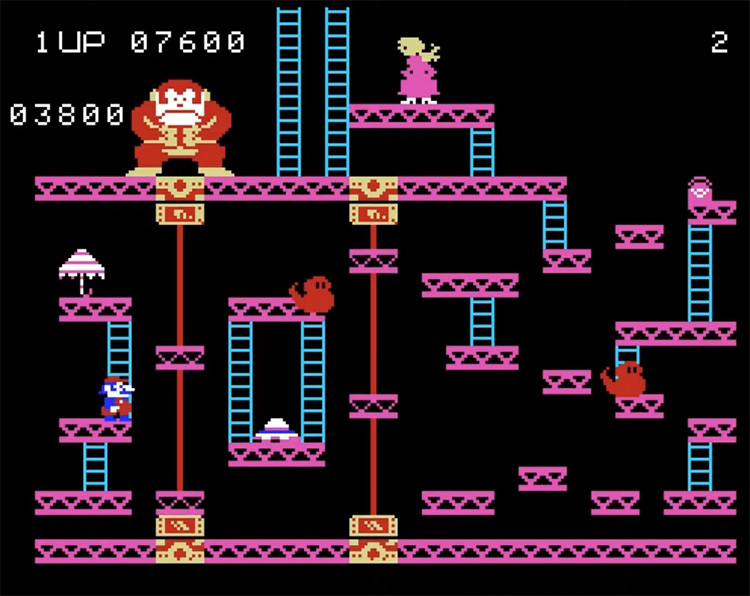
It’s fair to say the video game industry wouldn’t be what it is today without the massive arcade hit that was the original Donkey Kong.
And it’s just as good on the ColecoVision.
This excellent platformer shines for how you need quick reflexes and a strategic approach if you want to clear each level – which can feel more and more like a puzzle the more you try.
It was initially sold together in a bundle with the ColecoVision, and it does a great job of showcasing the machine’s graphical fidelity and intense colors.
1. Donkey Kong Jr. (1983)
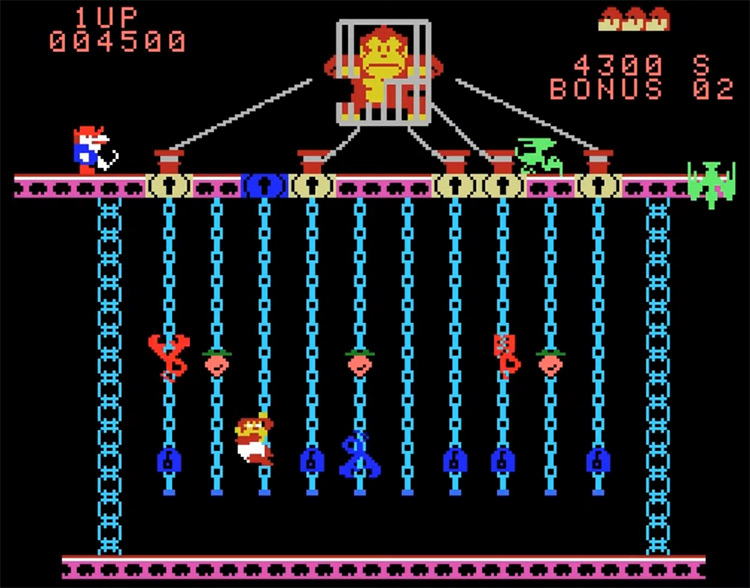
You can’t talk about the original DK without mentioning the sequel, probably the single most popular game on the ColecoVision – and for a good reason.
Nintendo made a point of differentiating this sequel from the original in almost every way they could while keeping the same quality standards and fun factor.
It definitely worked out.
The color palette is different, the level design follows different principles, and the first game’s protagonist is now the antagonist.
Ironic, considering it’s also the first game where he was called “Mario”.
If you want the most authentic ColecoVision gaming experience, Donkey Kong Jr. is it.
